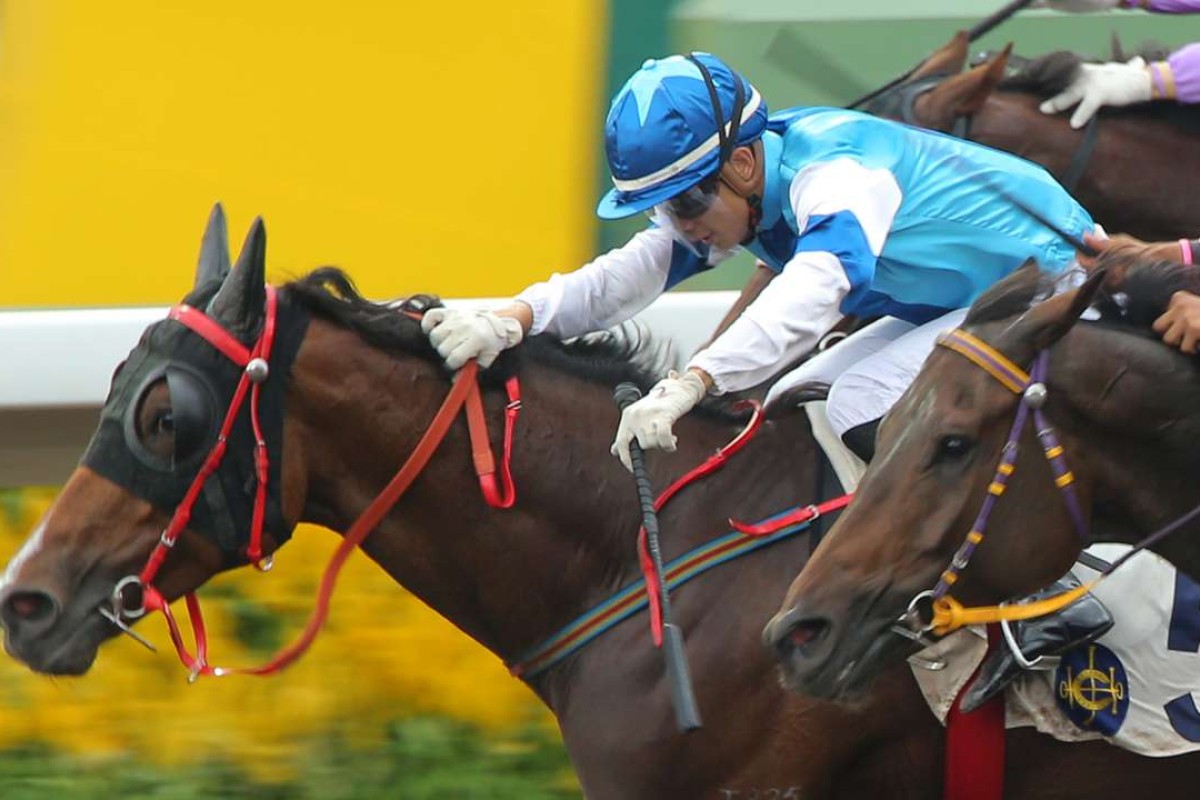With no appeal in sight, the Howard Cheng Yue-tin ban for three months over the jockey’s riding of Master Gold is a done deal once he has completed his engagements on Wednesday night and all that remains to be seen is what the Licensing Committee will make of it.
That board having all but painted a picture for the jockey at the end of last season regarding keeping out of certain types of trouble, Cheng appears to have little reason for optimism or clemency but we’ll let that one play out in its own good time.
Career of Hong Kong’s top Chinese jockey, Howard Cheng, appears doomed after latest heavy ban
What we did think about the case became a broader question after Master Gold sat four-wide throughout his next run on the dirt last Saturday and won, giving the “reasonable and permissible measures” tip system two wins from the past three runners.

On face value, it seems a reasonable and permissible system to follow – after all, the clear implication of a successful prosecution under the rule is that the horse would have done better with a different ride than the one the jockey chose to employ. It doesn’t mean the jockey didn’t try to win but most cynics and punters look at it that way.
Surely everyone was backing Master Gold after what had transpired?
Gerald Mosse got a stretch over his handling of Redkirk Warrior in early 2015 and that horse also stepped out to win his next appearance. And then there was Calling With Love, who won his next run after Jacky Tong Chi-kit was rubbed out under the reasonable and permissible measures rule for his ride on it in early 2014.
Celebrated jockey Gerald Mosse hammered with 15-meeting ban for ride on Redkirk Warrior
But if you’re thinking you’ve found the foolproof system for the future, well, you be the judge.
The running and handling ban between Redkirk Warrior and Master Gold was Alex Lai Hoi-wing for his effort aboard Good Method, who finally won last month – the bare 12 starts after the ride in question in July, 2015.
And then there’s the overall record of “reasonable and permissible” horses and we could find 27 cases going back to July, 2000. (Oh, and a note on the jockeys breaching the rule – it has been almost level between the local jockeys and the expatriates found guilty under rule 99 (2) and (5) in that time. However, the balance of the most recent history is very lopsided – Mosse is the only expat to fall foul of the rule in the past five years and the only one in the last eight cases.)

Since Stephen Baster got time on Outstanding Lad in July, 2000, the horses involved in breaches of rule 99 have had a combined 373 subsequent starts for 31 wins, with just five horses providing 18 of those wins and ten of them never won another race. Only three won their next race and they have been those recent ones mentioned above.
A road to riches following horses which the stewards judged to have not been given their proper chance? We’re leaving that up to the reader but the numbers don’t look flashy.
Track rotation the key to Valley times
There may not even be a clever answer to it according to John Ridley, the Jockey Club’s director of racing operations, but, if you noticed the slow track speed at Happy Valley last week you were not alone and we have been contacted by a few readers wanting to know why it happened.
Happy Valley has not been running particularly fast or slow so far this season, but that changed on the last midweek card.
There was a little rain on the night? Sure but, unless you were standing in the beer garden for the opening night of Oktoberfest in nothing but your lederhosen and a smile, it wasn’t of much consequence and we aren’t buying that one. There were theories posited re pace scenarios, but that didn’t seem to fit properly either.
We wondered if it might be to do with the changes in the grass itself as we move from autumn towards winter, which can often be quite dramatic in their effect on race times, although it did seem just a little early for that yet.

No combination of minds knows more about the living thing that is Happy Valley racecourse than Ridley and the executive tracks manager, Pako Ip Pak-chung, so we asked the question. And both threw out the possibility that any discrepancy, if one existed, had to do with the club starting off the fixture calendar away from the A tracks this season.
In days past, the first meetings at Sha Tin and Happy Valley were always on the A track, until day one of the 2015-16 season at Sha Tin was raced on the B for the first time.
This season, the club skipped straight to the B track for both courses, a move designed to dovetail the rail placements more smoothly into events like the Longines International Jockeys’ Championship (IJC) and Hong Kong International Races (HKIR).
The IJC has been on other tracks than the A without incident – the championship was conducted on the B in both 2009 and 2010 – but racing on the A course is the club’s first choice for feature meetings at both racetracks so it has engineered the calendar that way for this season.

As a result, Happy Valley’s first use of the A rail was last Wednesday, the track was still pristine from the summer break, despite it being October, and had a lot of grass cover.
And, even in this state, the A track had already been verti-drained, along with the maintenance procedures to relieve compaction on the rest of the Valley course where racing had already taken place.
The track raced well enough but it did seem to offer something to a few horses with questionable legs and joints which won on the night.
Anyway, there’s your (suggested) answer from the guys who know.














